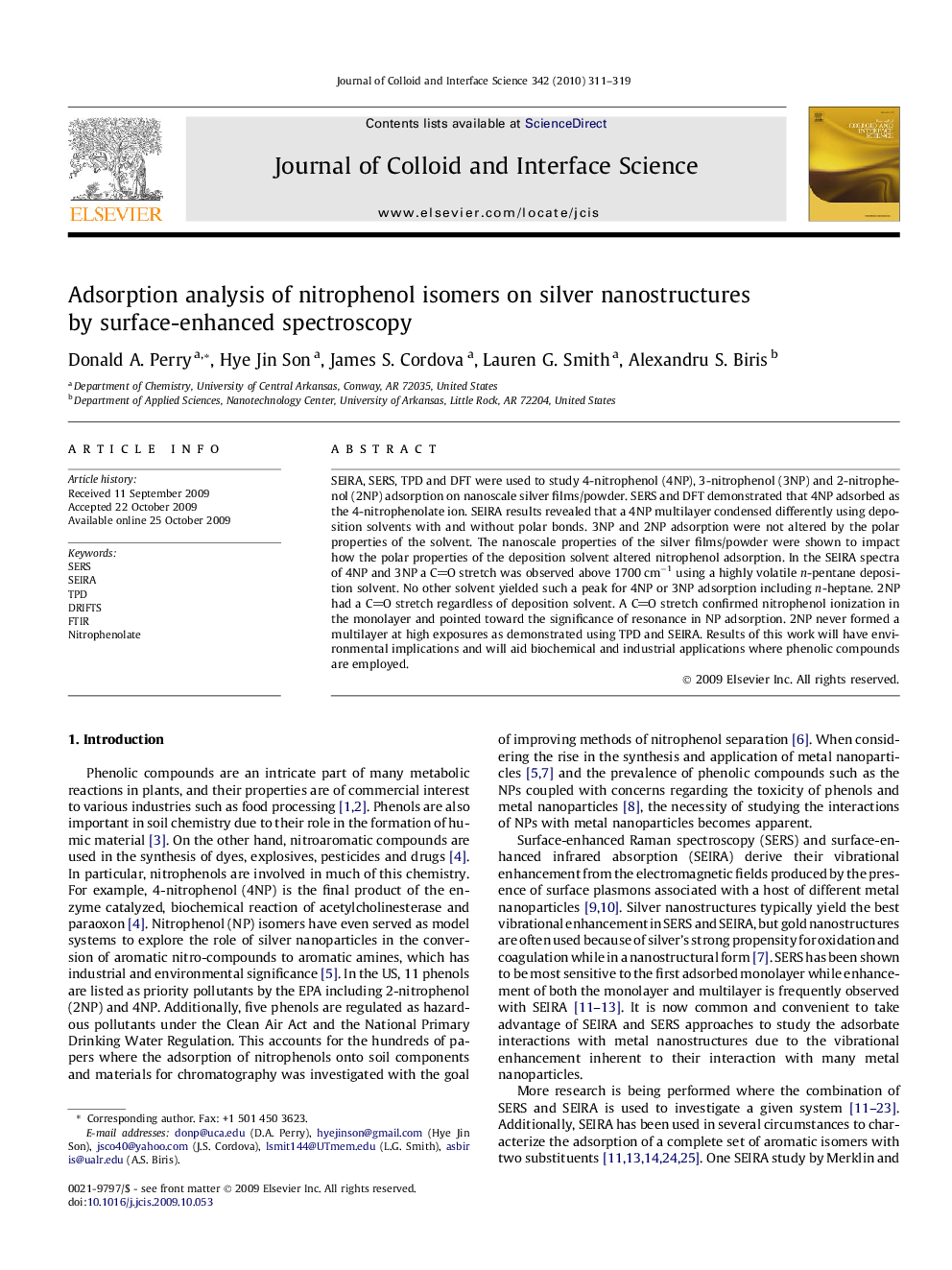| Article ID | Journal | Published Year | Pages | File Type |
|---|---|---|---|---|
| 609525 | Journal of Colloid and Interface Science | 2010 | 9 Pages |
SEIRA, SERS, TPD and DFT were used to study 4-nitrophenol (4NP), 3-nitrophenol (3NP) and 2-nitrophenol (2NP) adsorption on nanoscale silver films/powder. SERS and DFT demonstrated that 4NP adsorbed as the 4-nitrophenolate ion. SEIRA results revealed that a 4NP multilayer condensed differently using deposition solvents with and without polar bonds. 3NP and 2NP adsorption were not altered by the polar properties of the solvent. The nanoscale properties of the silver films/powder were shown to impact how the polar properties of the deposition solvent altered nitrophenol adsorption. In the SEIRA spectra of 4NP and 3NP a CO stretch was observed above 1700 cm−1 using a highly volatile n-pentane deposition solvent. No other solvent yielded such a peak for 4NP or 3NP adsorption including n-heptane. 2NP had a CO stretch regardless of deposition solvent. A CO stretch confirmed nitrophenol ionization in the monolayer and pointed toward the significance of resonance in NP adsorption. 2NP never formed a multilayer at high exposures as demonstrated using TPD and SEIRA. Results of this work will have environmental implications and will aid biochemical and industrial applications where phenolic compounds are employed.
Graphical abstractSERS, SEIRA, DFT, and TPD were used to explore the impact of the polar properties of the deposition solvent on nitrophenol isomers adsorbed on silver nanofilms (see DFT models below).Figure optionsDownload full-size imageDownload high-quality image (66 K)Download as PowerPoint slide
